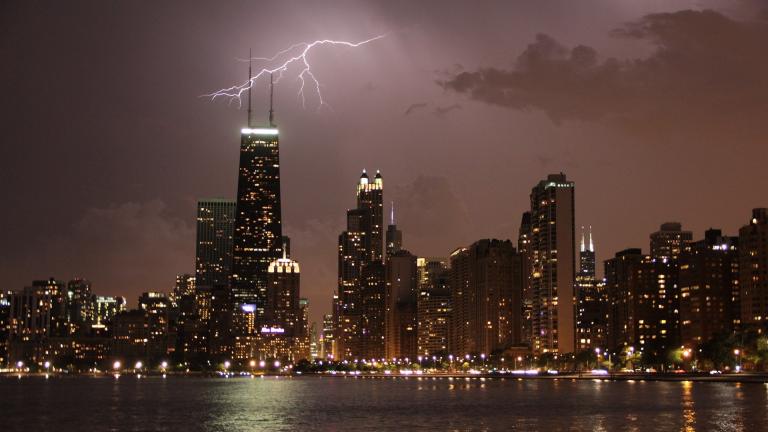Tuesday marks the anniversary of the derecho that brought dangerous, damaging winds and a tornado to the Chicago area.
On Monday, at least half a dozen tornadoes touched down to the west of Chicago, with more severe storms possible Tuesday and later this week.
Severe storms with torrential downpours and tornadoes impacted northern Illinois yesterday. We will be out surveying damage today, and will provide information as it becomes available. Of course, we're focusing on the potential for more severe weather this evening, too. #ilwx pic.twitter.com/aovyYJPMEs
— NWS Chicago (@NWSChicago) August 10, 2021
Victor Gensini, professor of geographic and atmospheric science at Northern Illinois University, says Monday’s thunderstorms are known as cyclic supercells, which he describes as: “Storms that can produce multiple tornadoes one right after the other. Those are usually the worst nightmare scenario for the Chicagoland area, because (if) you multiply the number of tornadoes you multiply the degree of damage, usually.”
Fortunately, storm watchers say most of the tornadoes were in more sparsely populated areas, and the most dangerous storms dissipated as they made their way across the Chicago area.
“Once a big, complicated storm like the one that caused the tornadoes yesterday (Monday) gets going, they can change the environment in which they exist – the winds coming out of the storm can actually change the movement of the storm,” said atmospheric scientist Scott Collis of Argonne National Laboratory. “This really caused them to stall over the northern Chicago region.”
Collis and Gensini say to expect the threat of storms to continue for the next few days. The moisture that contributes to favorable storms has also driven up the heat index in Chicago, as humidity combines with high temperatures to create the potential for heat exhaustion or heat stroke.
“That heat and humidity will remain in place until Thursday afternoon, when a cold front will sweep through and finally end the risk for severe storms and bring us some cooler temperatures as we head into early portions of the weekend,” Gensini said.
The extreme weather also comes amid a stark new warning on climate change from a UN panel, and both Gensini and Collis say weeks like this illustrate the importance of heeding the report’s warnings.
“These storms need a lot of moisture, and warmer air holds more moisture. That’s why we see such strong language in the UN climate report about the increased frequency of these kinds of storms,” Collis said.








